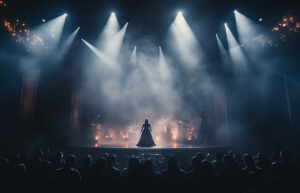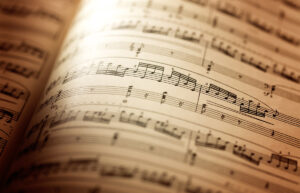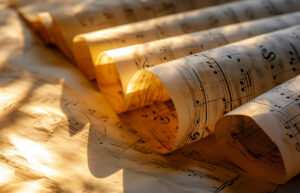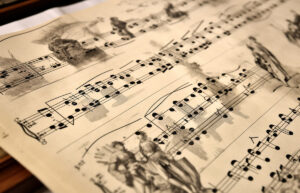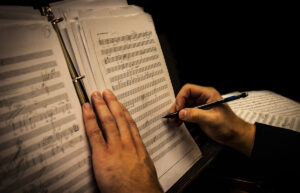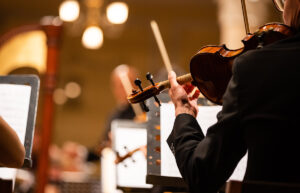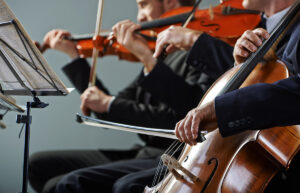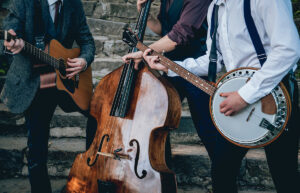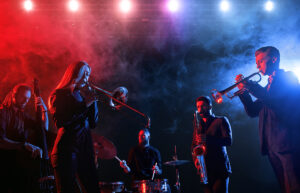What is an Interlude in Music: Meaning, Types, Functions, Steps & Examples
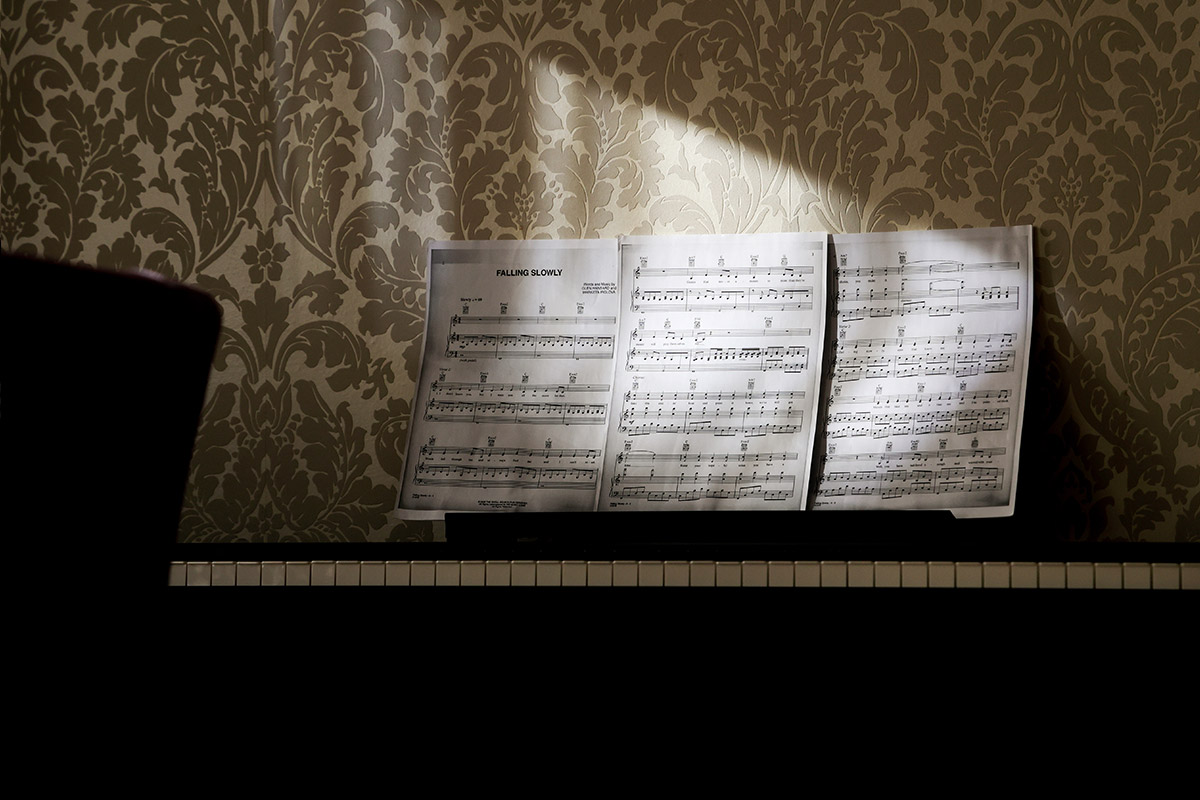
Step into the captivating world of music, where the interlude acts as a hidden gem, shaping the song’s tale. Imagine the interludes as musical pit stops, offering a unique pause or twist in the melody’s journey. In this comprehensive guide, we’ll uncover the magic behind these brief yet powerful segments. Join us on a journey where pauses carry meaning, transitions hold significance, and interludes play a pivotal role in the song’s narrative. Let’s decode what is an interlude in music together!
Welcome to TheDemoStop, now join the community!
Connect with artists, fans and producers around the world.
What is an interlude in music?
In music, an interlude is a short, distinct section within a song that differs from the main verses or choruses. It serves various purposes, such as providing a transition between song sections, offering a musical break or pause, introducing new melodies or themes, or creating contrast between different parts of the composition.
Historical backgrounds of interludes
To fully comprehend what is an interlude in music, we must delve into the rich historical background of the interlude, which originates from diverse cultural and musical traditions. In medieval times, interludes referred to short dramatic or comedic performances inserted between acts of longer plays or during banquets, serving as entertainment diversions.
Musically, interludes emerged in the Baroque period, where composers like Johann Sebastian Bach utilized them in compositions like suites or sonatas to transition between movements or highlight contrasting musical ideas. During the Romantic era, composers like Franz Liszt and Richard Wagner expanded the use of interludes in operas and symphonic poems to evoke specific emotions or depict scenes within the larger narrative.
In the 20th century, interludes gained prominence in various genres, including jazz, rock, and pop music. They became essential tools for creating mood shifts, introducing instrumental solos, or experimenting with sonic textures, allowing artists to explore musical boundaries and enhance the overall storytelling within a piece of music.
Importance of interludes in music
Interludes hold a pivotal role in music, serving as dynamic connectors within a composition. These segments offer vital transitions, providing breathing space between different sections of a song or piece.
Beyond mere breaks, interludes contribute to the overall narrative by introducing new musical motifs, textures, or themes. They create contrast, enhancing the listener’s experience by adding depth and variation to the music.
Functioning as pivotal moments, interludes can evoke emotions, build anticipation, or mark a change in mood, ultimately shaping the story the music intends to convey. Their versatility allows artists to experiment with structure, pacing, and sonic landscapes, elevating the composition and offering a means to captivate and engage audiences on a deeper, more nuanced level.
Types of interludes in music
Within-track interludes
Within-track interludes are brief pauses or musical shifts within a single song, featuring instrumental breaks, changes in tempo, or unique musical passages, enhancing the song’s structure and dynamics.
Between-track interludes
Between-track interludes serve as standalone pieces between songs on an album, creating cohesion and thematic continuity. They include ambient sounds, short compositions, or spoken word segments, linking tracks, setting the album’s mood, and clearly specifying what is an interlude in music.
Skits as interludes
Skits in music, particularly in genres like hip-hop, act as narrative interludes. They feature spoken-word elements, comedy, or storytelling, contributing context, humor, or thematic reinforcement within the album’s overarching storyline.
Functions of interludes in music
Transition
Interludes serve as crucial transitional elements within music, facilitating smooth shifts between different sections or movements within a composition. Acting like musical bridges, they create seamless connections between contrasting parts of a song, aiding in the progression from one musical idea to another. These transitional interludes help maintain coherence and flow, ensuring that the shifts between sections feel natural and organic rather than abrupt or disjointed.
Contrast
Interludes provide a break from the main thematic material, offering a divergence in mood, tempo, dynamics, or instrumentation. It creates a heightened sense of variety and interest within a piece by juxtaposing differing musical elements. This contrast can enhance the emotional impact of the music, drawing attention to specific themes or motifs by presenting them in a new context.
Development
Interludes contribute to the development and expansion of musical ideas within a composition. They can introduce new melodies, motifs, or rhythmic patterns, allowing for the exploration and elaboration of themes presented earlier in the piece. Through these interludes, composers and musicians have the opportunity to develop musical material further, adding layers of complexity or variation to enhance the overall depth and richness of the music.
Mood
Interludes play a crucial role in shaping the mood and atmosphere of a musical piece. By altering the sonic landscape or introducing new tonal colors, these segments can evoke emotions, create tension, or establish a specific ambiance within the music. Whether through a change in instrumentation, a shift in tempo, or a departure in harmonic progression, interludes have the power to profoundly influence the emotional and perceptual responses of the listener, contributing significantly to the overall mood and emotional journey of the composition.
Welcome to TheDemoStop, now join the community!
Connect with artists, fans and producers around the world.
6 Art forms that use interludes
Drama
In theatrical performances, interludes historically refer to short dramatic or comedic segments inserted between acts or scenes of a play. In dramas, interludes serve as entertainment diversions, offering a break from the main storyline, often providing comedic relief or presenting a separate storyline within the larger theatrical production.
Opera
Interludes in opera serve various purposes, such as providing transitions between acts, introducing new thematic elements, or offering orchestral interjections between vocal sections. These musical interludes can depict scenes, convey emotions, or bridge the gap between different parts of the opera, contributing to the performance’s overall storytelling and dramatic impact.
Religious Services
Interludes, often integral in religious ceremonies and services, play a significant role in enhancing the spiritual experience for participants. These musical or spoken-word interludes punctuate key moments, providing reflective pauses or introducing changes in the order of worship.
Film & TV
In cinema and television, interludes play a significant role in storytelling. They can appear as transactional scenes, montages, or musical segments between acts, providing breaks in the narrative, offering thematic connections, or emphasizing emotional moments. Interludes in film and TV contribute to pacing, mood setting, and the overall cinematic experience.
Weddings
During wedding ceremonies or receptions, interludes can be musical performances, spoken-word segments, or transitional moments between different parts of the event. They can include instrumental pieces, readings, or brief pauses that mark transitions between various ceremonial rituals, enhancing the flow and emotional resonance of the wedding proceedings.
Albums
In music albums, interludes connect tracks, aiding in thematic continuity or storytelling. These include instrumental compositions, spoken-word segments, ambient sounds, or short musical vignettes placed strategically between songs. Interludes in albums contribute to the cohesion of the musical work, setting the mood, introducing themes, or providing moments of reflection for the listener, enriching the overall listening experience.
How to write an interlude?
Establish what you want
Define the purpose of your interlude. Determine whether it’s meant to transition between sections, introduce a new theme, provide a break, or add contrast to the main composition. Clarifying your objective will guide your creative process and elucidate what is an interlude in music.
Think differently
Approach the interlude with a fresh perspective. Consider using different musical elements, instrumentation, or a change in tempo, dynamics, or style compared to the main sections of the piece.
Keep it brief
Interludes are meant to be concise. Focus on delivering your message or musical idea efficiently without overstaying its welcome. Aim for brevity while ensuring the interlude effectively serves its intended purpose.
Experiment
Embrace experimentation with melodies, harmonies, rhythms, or instrumentation. Don’t hesitate to try new techniques or musical approaches that might enhance the interlude’s impact and uniqueness within the composition.
Break up the flow
Introduce a break or shift in the music’s flow. Utilize pauses, transitions, or unexpected changes to create contrast and capture the listener’s attention, providing a distinct moment within the song.
Add some texture
Consider adding layers or textures to the interlude to make it stand out. Experiment with different instrumental combinations, effects, or sonic landscapes to create depth and interest.
Test and adjust
Once written, test the interlude within the context of the entire piece. Listen critically to its effect on the composition. Adjust elements as needed to ensure they seamlessly integrate while fulfilling their intended role within the music. Refine and polish the interlude until it aligns with your musical vision.
Interlude examples in music
“She Bangs the Drums” by The Stone Roses
In The Stone Roses’ song “She Bangs the Drums,” the instrumental break between verses and choruses serves as an interlude. It features a catchy guitar riff and a change in rhythmic emphasis, providing a brief but impactful transition.
“Dammit” by Blink-182
“Dammit” by Blink-182 showcases an interlude that breaks away from the song’s energetic punk rock tempo. The interlude features a stripped-down segment with softer vocals and acoustic guitar, creating a contrasting mood before building back into the song’s high-energy chorus.
“Break Stuff” by Limp Bizkit
In Limp Bizkit’s “Break Stuff,” the instrumental bridge is an interlude. It introduces a change in the song’s groove and tempo, creating a momentary shift from the aggressive vocals and heavy guitar riffs.
Welcome to TheDemoStop, now join the community!
Connect with artists, fans and producers around the world.
“No Surprise” by Turnstile
In Turnstile’s “No Surprise” from the album “Glow On,” the instrumental break acts as an interlude. This segment introduces a melodic shift, incorporating clean guitar tones and atmospheric elements that contrast the energetic hardcore punk sound prevalent throughout the song. The interlude adds a moment of reflection, enhancing the song’s depth and showcasing the band’s versatility within their musical style, thereby explicating what is an interlude in music and how it adds to the melody of the song.
Conclusion
What is an interlude in music?
An interlude in music is a brief, distinct section within a song or composition that serves as a transitional or contrasting element between main parts.
Historical background of interludes
Interludes originated as short entertainment segments in medieval theater. In music, they evolved during the Baroque period, used by composers like Bach for transitions. Throughout history, interludes have served as transitions, contrasts, and storytelling in various art forms.
Importance of interludes in music
Interludes are important in music for providing transitions between sections, creating contrast, developing musical themes, and setting mood, enhancing the overall structure and emotional impact of a composition.
Types of interludes in music
- Within-track interludes
- Between-track interludes
- Skit as interludes
Function of interludes in music
- Transition
- Contrast
- Development
- Mood
6 Art forms that use interludes
- Drama
- Opera
- Religious Services
- Film & TV
- Weddings
- Albums
How to write an interlude?
- Establish what you want
- Think differently
- Keep it brief
- Experiment
- Break up the flow
- Add some texture
- Test and adjust
Interlude examples in music
- “She Bangs the Drum” by The Stone Roses
- “Dammit” by Blink-182
- “Break Stuff” by Limp Bizkit
- “No Surprise” by Turnstile
FAQs
What is an interlude in music?
An interlude in music is a brief section within a song or composition that acts as a transition or contrast between main parts.
What is the historical background of interludes?
Interludes originated in medieval theater as short diversions. In music, they evolved during the Baroque period for transitions, expanded in the Romantic era, and continued to serve various roles in different art forms throughout history.
What is the importance of interludes in music?
Interludes in music offer transitions, contrasts, development, and mood, enhancing the overall structure and emotional impact of a composition.
What are the types of interludes in music?
- Within-track interludes
- Between-track interludes
- Skit as interludes
What are the different uses of interludes?
Interludes in music are used for transitions, contrasts, development, and setting the mood within a composition.
How to write an interlude?
- Establish what you want
- Think differently
- Keep it brief
- Experiment
- Break up the flow
- Add some texture
- Test and adjust
What are the 6 art forms that use interludes?
- Drama
- Opera
- Religious Services
- Film & TV
- Weddings
- Albums
What are the examples of interludes in music?
- “She Bangs the Drum” by The Stone Roses
- “Dammit” by Blink-182
- “Break Stuff” by Limp Bizkit
- “No Surprise” by Turnstile















